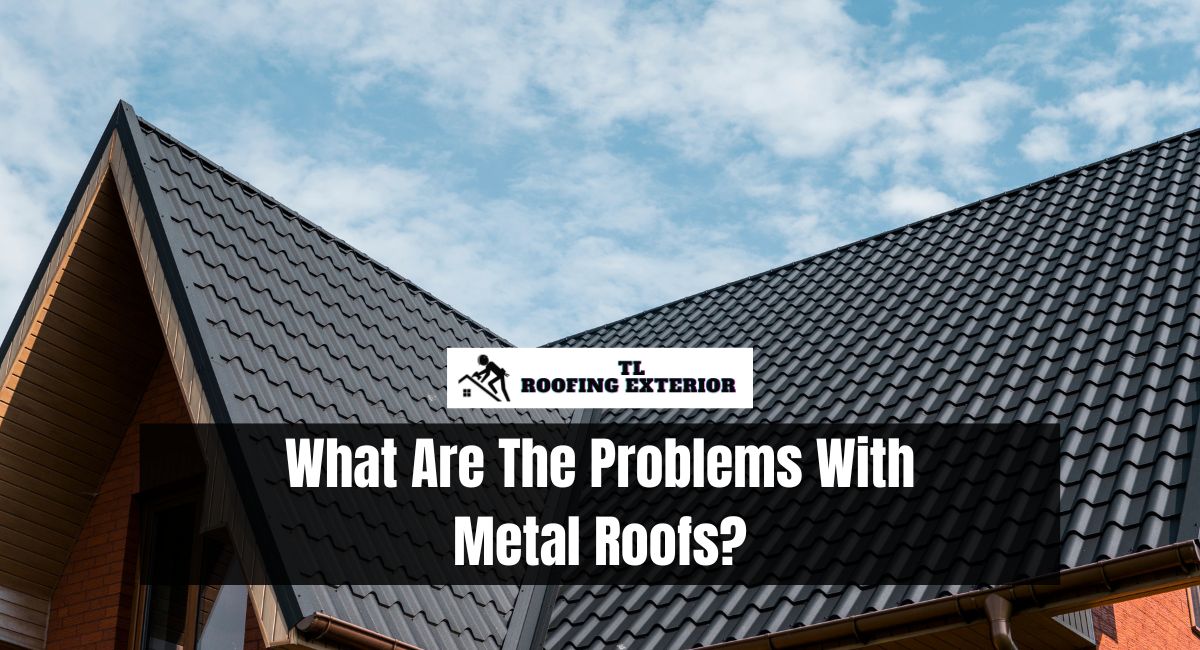Metal roofs, with their durability, energy efficiency, and sleek aesthetics, have gained significant popularity in recent years. Touted for their long lifespan and resistance to many environmental challenges, they seem like an ideal roofing solution.
However, like all materials, metal roofs come with their own set of challenges. So, what are the problems with metal roofs?
This article aims to shed light on the potential problems associated with metal roofs, arming homeowners with the knowledge to make informed decisions and address issues as they arise.
What Are The Problems With Metal Roofs?
Metal roofs are well known for their durability, longevity, and energy efficiency. However, like all roofing materials, they come with their own set of potential problems. Here are some common issues associated with metal roofs:
1. Expansion and Contraction
Metal roofs can expand & contract with temperature fluctuations. If not properly installed with fasteners that allow for this movement, panels may become loose or warp over time.
2. Noise
Metal roofs can be noisier than the other roofing materials during heavy rain or hailstorms. Proper insulation and underlayment can mitigate this issue.
3. Denting
Hail, falling branches, or other debris can dent metal roofs, especially softer metals like copper or aluminum.
4. Corrosion and Rust
While many modern metal roofs are designed to resist corrosion, some metals, especially steel, can rust if their protective coating is compromised.
5. Mismatched Repairs
If repairs are needed, finding a perfect match for the original metal can be challenging, leading to aesthetic inconsistencies.
6. Inadequate Installation
Metal roofing requires specialized knowledge for proper installation. Issues like leaks, poor ventilation, or panel displacement can arise if not correctly installed.
7. Scratching and Scuffing
Walking on a metal roof or falling debris can cause scratches or scuffs, which can compromise the protective coating and aesthetics.
8. Condensation Issues
If not adequately insulated, condensation can form on the underside of metal roofs, leading to potential structural moisture-related problems.
9. Cost
Metal roofs tend to be more expensive initially than some other roofing materials. However, their longevity and durability can make them cost-effective in the long run.
10. Chalking and Fading
Over time, the UV rays from the sun can make the paint on metal roofs to fade or produce a chalky residue. This is more of an aesthetic concern than a functional one.
11. Galvanic Corrosion
When different types of metals come into contact in the presence of an electrolyte (like rainwater), galvanic corrosion can occur. It’s essential to ensure compatibility between all metal components of a roof.
12. Heat Retention
Dark-colored metal roofs can retain heat, which might be a concern in extremely hot climates. However, many metal roofs reflect more UV radiation than asphalt roofs, potentially reducing cooling costs.
13. Water Accumulation
Water can accumulate in areas with low slopes, leading to potential leakage if the roof is not properly sealed.
In conclusion, while metal roofs offer many benefits, it’s essential to be aware of potential problems. Proper installation, regular maintenance, and choosing the right type of metal and coating can mitigate many of these issues.
Do Metal Roofs Attract Lightning?
Metal roofs do not inherently attract lightning more than other materials. While metal is a good conductor of electricity, lightning is primarily attracted to the highest point in an area, not necessarily the material.
A metal roof’s conductivity can be an advantage: if a metal roof is struck, the energy is dispersed over a larger area, potentially reducing the risk of fire or damage.
Proper grounding further ensures safety. Overall, the risk of a lightning strike to a building is determined by its location, height, and surroundings, not solely its roofing material.
Are Metal Roofs Loud When Raining?
Metal roofs can be louder than other roofing materials during rain, but modern installations often mitigate this noise. The sound is significantly reduced when metal roofs are installed over solid sheathing, attic insulation, or with specialized underlayments designed to dampen noise.
As a result, in many contemporary homes with properly installed metal roofs, the sound of rain is minimal and can be comparable to traditional roofing materials.
Bottom Line
While metal roofs offer numerous benefits, including fire resistance, longevity, and recyclability, they are not without potential drawbacks. Issues can range from expansion and contraction, leading to fastener problems, to potential noise during heavy rain or hail.
Also, improper installation can result in leaks; over time, even corrosion might be a concern, especially in coastal areas. It’s essential for homeowners to weigh the benefits against these potential challenges, and when opting for a metal roof, ensure proper installation and regular maintenance to maximize the roof’s lifespan and performance.
Also read: What Is The Best Material For Fascia Boards?
